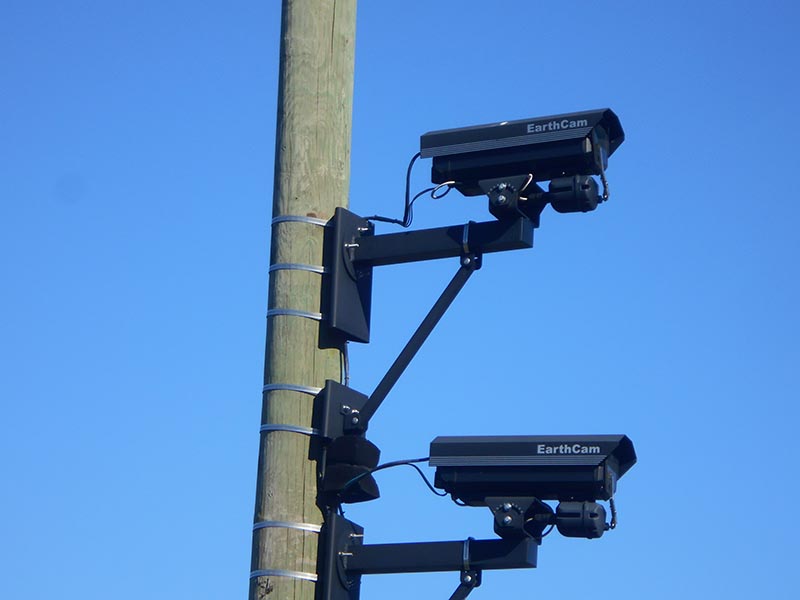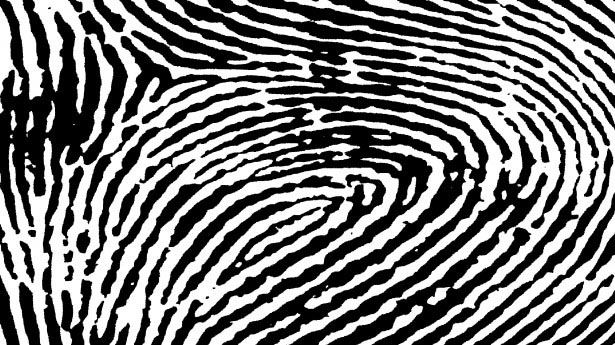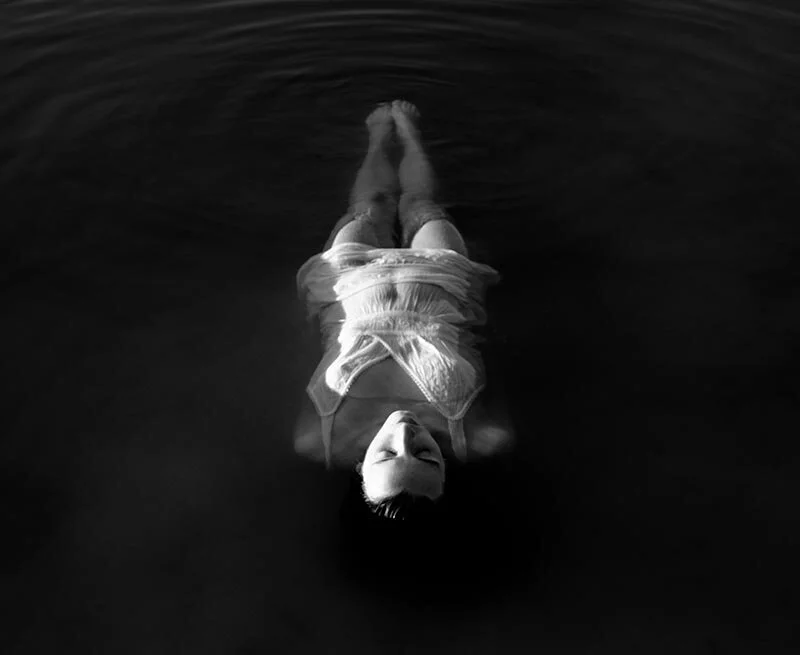The People Who Talk to Andy Warhol From Beyond the Grave
He’s been dead since 1987, but that hasn’t stopped fans from visiting the pop artist’s final resting spot.
By Laura Smith
Art: Kati Kirsch
Madelyn Roehrig is standing in front of Andy Warhol’s grave holding a black accordion folder as I walk up the grassy hill from my car to meet her.
It is her first visit to St. John Byzantine Cemetery in Bethel Park, Pennsylvania, since last August when she moved from Pittsburgh to Savannah, Georgia. But she is at home here, having previously visited Warhol’s grave almost every day for the past 10 years.
Roehrig is dressed for both summer and winter, wearing a long-sleeved pale pink shirt under a gray winter vest, black skinny jeans, and bright pink sandals. It’s a sunny 70 degrees, but a cool, strong wind blows constantly, making me wish I’d layered up myself.
“This is probably my hundredth folder that I’ve replaced,” Roehrig tells me as she swaps out the torn, smudged folder with a new, bright blue one. The blue folder goes into a clear plastic box along with some blank sheets of paper, pens, and a typed message encouraging visitors to leave a note for Andy. The box is then sealed with a white plastic lid and placed next to the pop artist’s headstone.
Roehrig has been managing an ongoing art project at Andy Warhol’s grave since February 2009 titled Andy’s Figments. The purpose of the project is to document Warhol’s grave through the seasons, observe the gifts that are left behind for him, and to find out more about the visitors who leave them.
“I wanted to know why other people were coming,” she explains.
She hands me a plastic Ziploc bag with over a dozen letters that have been left at Warhol’s grave since January.
They are the newest additions to the over 1,400 letters she has already collected over the years and are penned by visitors of all ages and backgrounds. Some live right around the corner while others have traveled from as far as China and Australia to see the iconic artist’s final place of rest. Many of the letters ask questions, include drawings, or simply gush over his life’s work.
Roehrig also runs the Facebook group Conversations with Andy, and four of the over 1,800 members are also at the gravesite today.
One of them, Steve, has brought his teenage daughter, Josie, along with him. He tells me about the time he heard bagpipe music playing in the cemetery and came over to find Dave Olson, a fellow Warhol fan, who used to play tunes for Andy before he passed away.
Someone in our group notes how Dave once mentioned that he wanted some of his ashes to be scattered around Andy Warhol’s grave when he died. No one seems to know if this ever happened.
Roehrig flips through several pages of a book she is writing about her art project. It includes photos of the grave over the years, the various objects left behind, and the people who visit. Some visitors are dressed up, like Dave in full piper attire complete with kilt, and Carolyn, another visitor at the gravesite today, who once dressed up as Elvis.
Roehrig plans to organize the book by season. This section is titled Winter, and she admits that it was a ton of work just to put this much together, with so many photos, moments, and stories to sort through and select. Despite the harsh Pittsburgh winters, she says that the visitors are consistent year round. So even the winter section includes a ton of content. “There are different objects in the winter than there are in the summer,” she tells me.
This is apparent when I look at the gravesite today. There are three cans of soup, a tiny bottle of Heinz ketchup, a string of rosary beads, some coins, a metal cross, withered poinsettias, two bunches of blooming daffodils, and a leftover sign from Halloween.
I place a can of Campbell’s tomato soup on top of the tombstone, bringing today’s total to four.
There is also a stack of postcards drawn by an artist in Florida who makes celebrity prints (similar to Warhol’s silk-screen printings) and sends them to Roehrig. This stack features images of Rob Horning, Carl Brandt, and Mary Telfair. The Telfair postcard is in honor of Roehrig’s new hometown of Savannah, which inherited the wealthy heiress’ extensive art collection and named several buildings after her upon her death.
Though this was her first year away from the grave on Warhol’s death anniversary, Roehrig says she will always come back to Pittsburgh for his birthday. But not everyone finds it an ideal setting for a birthday party.
“This is not for people who are creeped out by cemeteries,” Carolyn says.
“Some people don’t want to come.”
This location is far from spooky, though. The cemetery sits in the middle class suburban neighborhood of Bethel Park overlooking a busy intersection. It’s after 4 p.m. on the day that I meet Roehrig and the gang, and rush hour traffic is starting to build. Luckily, the cemetery sits far enough back on the hill that it doesn’t drown out the group’s conversations as they catch up with each other and, of course, Warhol.
You’d probably assume that Warhol would have been buried in the famous Green-Wood or Woodlawn cemeteries in his adopted home of New York City, surrounded by fellow celebrities and people of stature.
But Pittsburgh loves to boast that he is one of our own. We have the Andy Warhol Museum where visitors can view his artwork, movies, collection of celebrity memorabilia, and other personal items that belonged to him. Then there’s the Andy Warhol Bridge which connects downtown with the north shore of Pittsburgh, and, conveniently, leads right to the museum.
If you really want to fan out, you can drive through the modest neighborhood of South Oakland where Warhol grew up, about seven miles from the cemetery, next door to downtown Pittsburgh. There he lived with his Carpatho-Rusyn immigrant parents and two older brothers. He attended mass at St. John Chrysostom Eastern Rite Russian Greek Catholic Church and graduated from Schenley High School before attending what is now known as Carnegie Mellon University with his family’s support. After graduation, he moved to New York City to pursue a career in art, and the rest is history.
So, to us, Warhol feels like a hometown boy, despite the fact that it’s hard to picture him coming home after a long day working in the steel mills, washing down a chipped ham sandwich with an Iron City beer for dinner, and listening to the Pirates game on the radio. While his history is firmly rooted in his hometown, Warhol’s famous image is leagues removed from the blue collar lifestyles of his peers.
Warhol was once quoted saying that he wanted his tombstone to read one word: “figment.“ Whether he was serious or not, this is not what his brothers picked out for him.
Instead, Warhol’s gravestone features his celebrity name — “Andy Warhol” — the “a” having been dropped at the end of his family name, Warhola. It also has his birthday, the date of his death, and carvings of an eastern orthodox cross, a stack of wheat, and praying hands.
The tombstone itself is tiny compared to the one for his parents, Andrej and Julia, who are buried directly behind him, and the one for his brother John, which he shares with his wife, located about six graves down from their parents.
Roehrig was actually visiting Warhol’s grave on Christmas Eve in 2010 when a man and his wife approached the gravesite. She did what she always does when she encounters a fellow visitor and asked him if he wanted to “talk” to Andy.
The man said “no” and walked away. His wife stayed behind and explained to Roehrig that he had just lost his father that day. The man turned out to be John’s son, Donald, and one of Warhol’s nephews.
Now the Vice President of The Andy Warhol Foundation for the Visual Arts, Donald has carried on his father’s work of keeping Warhol’s memory alive by organizing tours at the museum, writing a blog about his famous uncle, and maintaining the grave sites of his family members at the cemetery.
Roehrig has spoken to Donald several times since their first fateful encounter.
“I think Andy wanted us to meet,” she says about that day.
On my first visit in August 2009, there were over a dozen soup cans left on and around Warhol’s headstone. Some of the cans had writing on them, with messages to the artist along with the date that they had been left behind.
Each time I’ve visited, there has been a new collection of soup cans and other gifts left at the grave. I had to know: Where do the old ones go?
“Because they’re left at the cemetery,” Roehrig says, they’re all technically public domain. “So it belongs to everybody.”
As a result, Roehrig collects the items that have been there awhile and takes them home with her. On her website, she lists the names and numbers of items that have been left at Andy Warhol’s grave over the years, which includes everything from the normal, everyday products that he drew, like Campbell's Soup cans and Heinz Ketchup bottles, to pieces of original art, coins, dollar bills, and of course, the letters. Everything is saved and was previously kept in a storage unit, but after a cockroach infestation, they are now stored in her garage in Georgia.
Steve notes that the cemetery workers hate it when people leave items for Warhol. They are constantly complaining about having to dodge the shrine with their lawnmowers.
As we talk, men in construction vests happen to be working in the cemetery. The grass is still too short to cut, but they are digging graves and cleaning up branches that have fallen over during the winter. They keep their distance on both sides of us.
Despite being a 12-hour drive away, Roehrig can still visit Andy Warhol’s grave daily via the EarthCam, an outdoor webcam which films the gravesite 24/7. Nicknamed “Figment,” the camera was installed by St. John Chrysostom Byzantine Catholic Church and the Andy Warhol Museum on what would have been Andy Warhol’s 85th birthday on August 6, 2013.
Thanks to Figment, Roehrig can see what new gifts people are leaving for Warhol each day. Meanwhile, Steve uses the EarthCam as a kind of doorbell to signal to him when there’s a visitor at the gravesite so that he can catch up with old friends or perhaps make a new one.
“That’s how I know when to come up,” he says.
He also says that his hound dog is very protective of the site. All Steve has to say is “Go get Andy,” from anywhere in the cemetery, and the dog will go right to the grave.
Roehrig believes that Warhol truly is a figment of everyone who comes to visit, that his form in the afterlife takes the shape of whatever people need him to be.
Whether they are a fan who wants to gush about his work or a lost soul who simply needs advice, Warhol becomes that humbled celebrity or that invisible therapist. They speak to him silently in their head or talk to the grave as if he is standing right there in front of him.
I wonder what would Andy think of all of this? Would it appeal to his love of celebrity? Would he appreciate it as an affirmation of his lasting work as an artist? Is he bitter about the fact that it doesn’t simply read “Figment” on his stone? Or would he feel indifferent about it all, thinking, “What do I care? I’m dead.” Given his varied history and both public and private personas, I probably shouldn’t assume anything about what he would have thought.
What I do know is that when someone is buried after they die, they still feel present in some capacity.
The group gathered at Warhol’s grave proves this as they part ways, each saying goodbye to the famed artist’s final resting spot as naturally as they do to one another. They talk to him rather than about him. They play music, take pictures, plant flowers, and leave gifts.
Through the art that’s made and the friendships that are formed at his gravesite, Warhol continues to live on in this figment state.
Laura Smith is an office worker and middle grade novelist from Pittsburgh, PA. If she's not at the movies or working on a home or art project, you'll find her blogging.



















Creative uses for ashes abound as people increasingly seek personalized memorials for their loved ones.